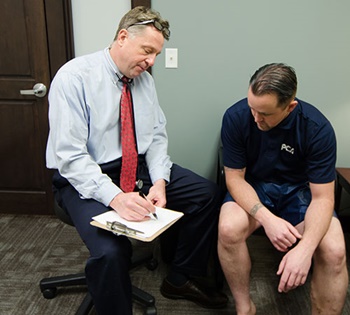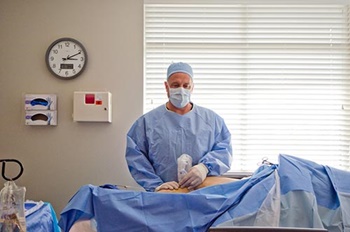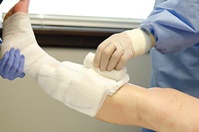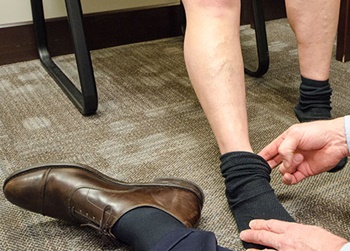Your Vein Treatment From Start to Finish
 Before Treatment
Before Treatment
- One-on-one consultation.You’ll meet with the doctor who will discuss your symptoms, history, etc.
- Diagnostic tests. Depending on your doctor’s physical assessment, he may recommend that you receive diagnostic testing. A certified technologist will conduct this painless test using a Duplex ultrasound. You’ll have gel applied to the area being examined. The ultrasound will help detect the presence of venous reflux or insufficiency and any other vein abnormalities. By actually seeing the veins at work, the doctor will be able to provide a firm diagnosis of your condition, which insurance companies will use to determine coverage. When venous insufficiency is diagnosed, and you’re having symptoms, insurance companies typically cover treatments.
- Getting insurance approval for treatment. Once you’ve received a diagnosis, you’ll then go through the process of confirming that insurance covers the procedure. Our staff is accustomed to doing this and will be glad to assist. Essentially, this means calling your insurance company and submitting all test results and other documents they require to approve treatment.
Treatment
 You’ll come to our comfortable office, where you’ll change into comfortable hospital “shorts” that allow the physician to work on your legs.
You’ll come to our comfortable office, where you’ll change into comfortable hospital “shorts” that allow the physician to work on your legs.- You’ll be lying down during the procedure.
- Depending on which procedure you’re having, you’ll feel some or no pain. Many patients compare it to a bee sting. Ask your physician if you’d like to know what pain to expect with your specific treatment.
- Most treatments last no longer than an hour. You’ll have adequate time to rest before you head home.
- You’ll need someone to drive you home, and you’ll want to take it easy for the first day or so, but then you can expect to resume your normal activities.
 When your treatment is finished, you’ll be able to walk on your own. Your leg or legs will be wrapped with bandages that will provide support as well as absorb the minor bleeding from the incision sites.
When your treatment is finished, you’ll be able to walk on your own. Your leg or legs will be wrapped with bandages that will provide support as well as absorb the minor bleeding from the incision sites.
After Treatment
In the days and weeks following your treatment, you’ll be able to return to your normal activities. You may need to continue wearing support wraps or stockings to aid in the healing process. You’ll want to pay attention to any symptoms you’re having.
Normal symptoms include:
- Aching at the incision sites.
- Minor bleeding, swelling, bruising and pain in the area treated.
- A tiny “scar” at incision sites that will essentially become invisible with a year.
Unusual symptoms include:
- Excessive bleeding.
- Pain or swelling in or around the treated area.
You should call your physician if you are experiencing any unusual symptoms.
Follow-up Appointment
 Dr. Jensen will see you, discuss any symptoms you’re having, and examine your legs to ensure the healing process is on track. He will also answer any questions you may have. If your condition requires multiple treatments (such as having multiple areas of spider veins), you will continue to receive treatment and follow-up care.
Dr. Jensen will see you, discuss any symptoms you’re having, and examine your legs to ensure the healing process is on track. He will also answer any questions you may have. If your condition requires multiple treatments (such as having multiple areas of spider veins), you will continue to receive treatment and follow-up care.
 Before Treatment
Before Treatment You’ll come to our comfortable office, where you’ll change into comfortable hospital “shorts” that allow the physician to work on your legs.
You’ll come to our comfortable office, where you’ll change into comfortable hospital “shorts” that allow the physician to work on your legs. When your treatment is finished, you’ll be able to walk on your own. Your leg or legs will be wrapped with bandages that will provide support as well as absorb the minor bleeding from the incision sites.
When your treatment is finished, you’ll be able to walk on your own. Your leg or legs will be wrapped with bandages that will provide support as well as absorb the minor bleeding from the incision sites.